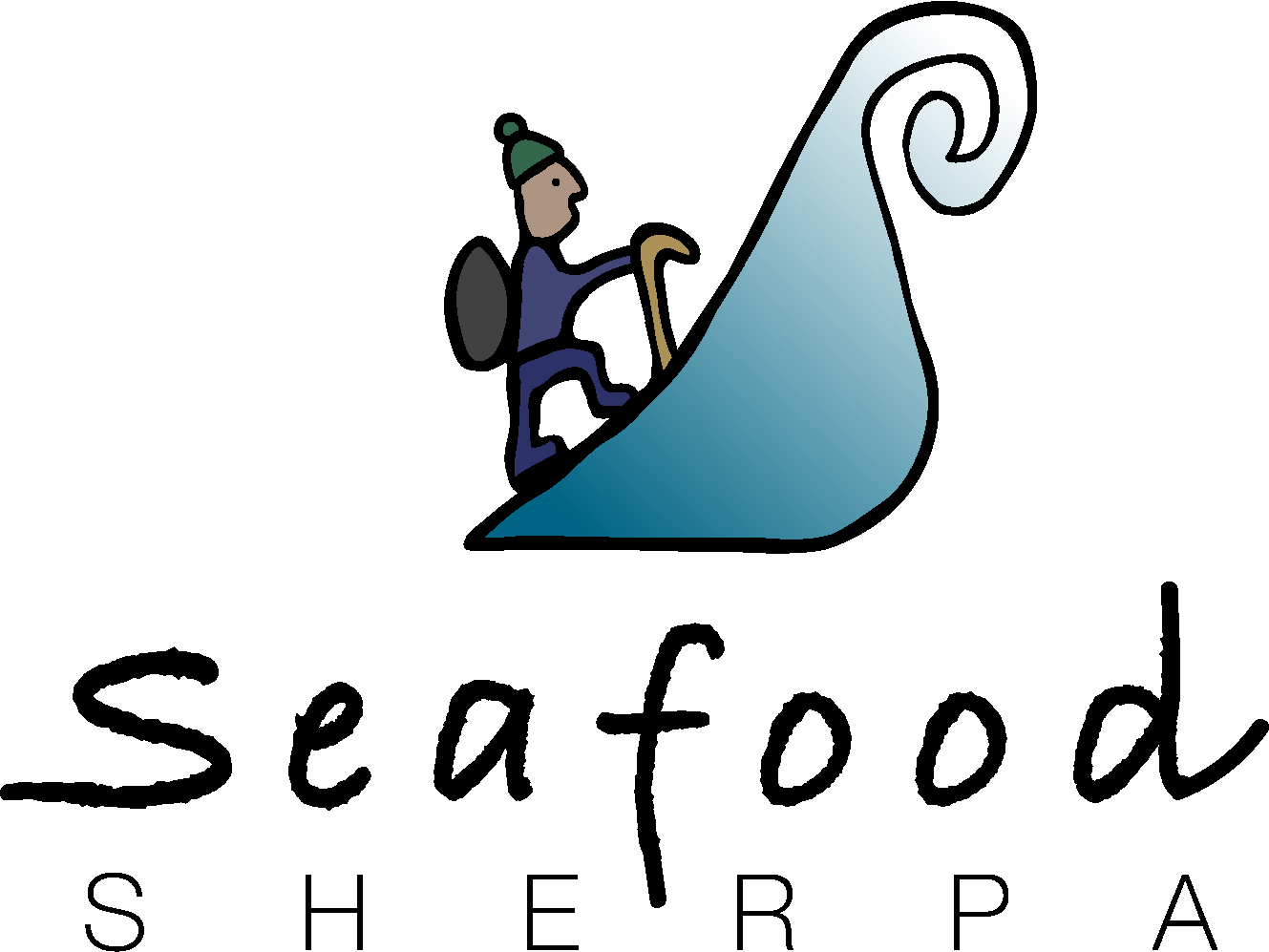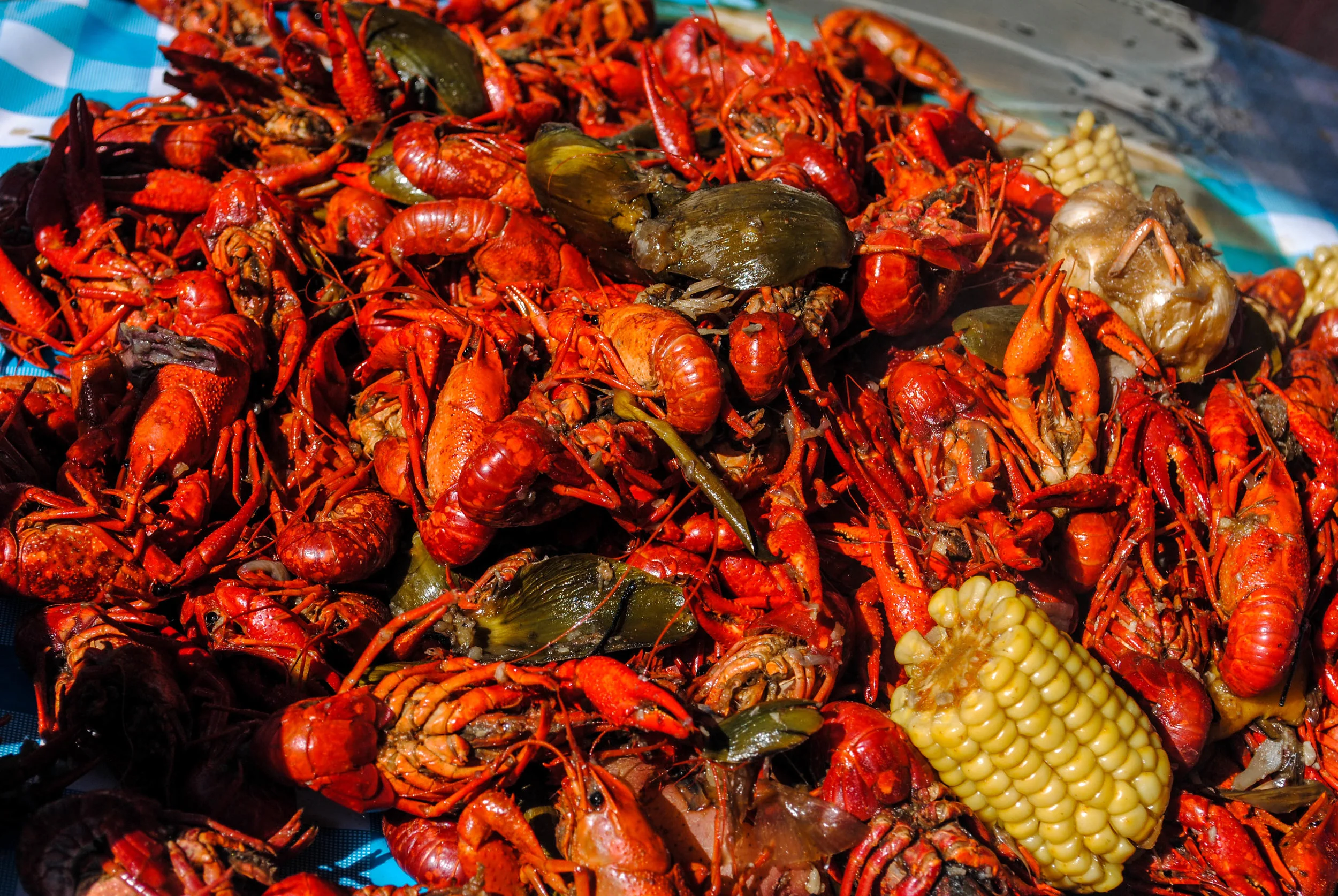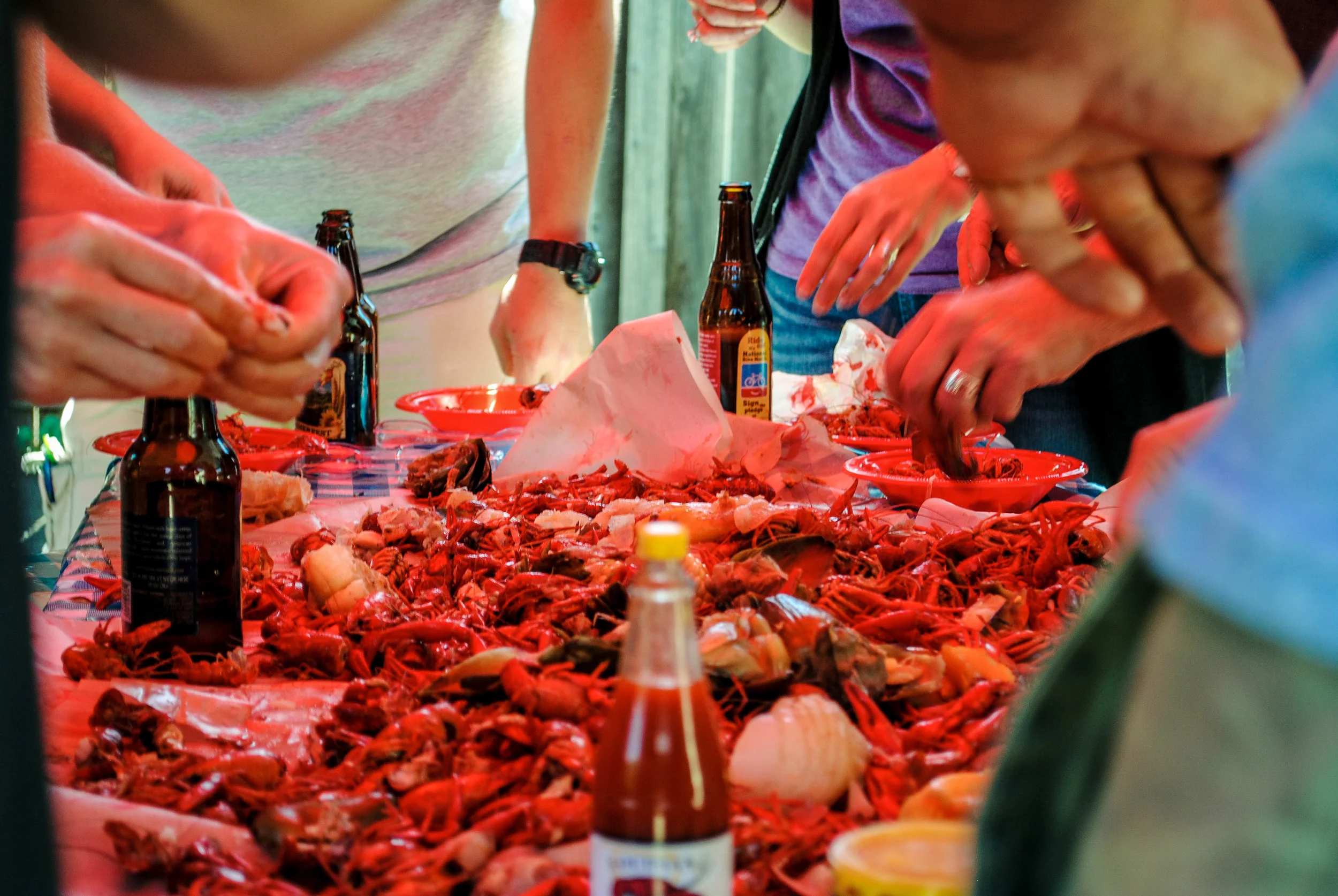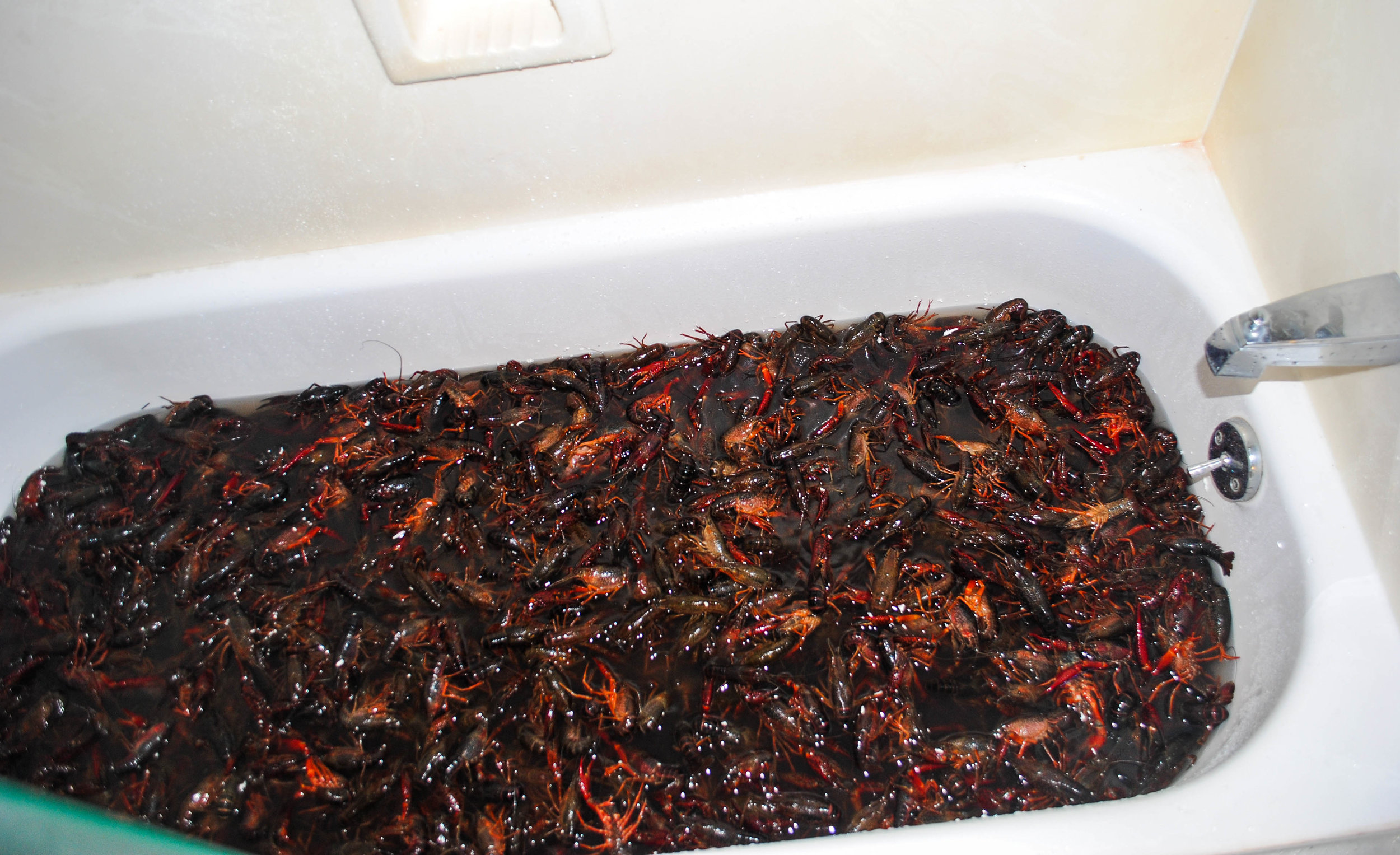DON'T CALL 'EM CRAWDADS
As a kid in California, I would occasionally tie a hotdog on a string and dip it into the murky water of the San Joaquin river in an attempt to catch a crayfish. We called them “crawdads.” They were a deep, dark red color with hints of black and dark blue. They had large claws and rock-hard shells. Once or twice we caught 6 or 8 of them in a day and we brought them home and boiled them. They were never really any good. Later in life, I came across small bins of them in Chinese food buffets and I never really enjoyed them there either. It wasn’t until I moved to New Orleans that I found out what a crayfish was supposed to taste like. I learned that right about the same time I learned what to call them. They’re called crawfish and you can sparingly refer to them as mud bugs. They are delicious, and they are a bayou staple.
If you do business in the Gulf region, from Texas to Florida, you’ll find occasion to sponsor, hold, or at least attend crawfish boils every spring and summer. They are more of a social event than a meal. They can last all day and locals will tell you that a good host will start with about 10 lbs of live crawfish per person. The yield on these is pretty low, so that probably amounts to under 2 lbs of food, but that is still a feast. It is downright ridiculous when you consider that the boil will likely also contain sausage, corn, potatoes, onions, garlic, and sometimes even artichokes. If you are lucky enough to find yourself with an opportunity to attend a traditional Louisiana crawfish boil, come hungry, and plan to stay for a long time. Plan on drinking a lot of beer while you are there too. The sweltering temperatures will make you very thirsty, as will the heat coming off of the crawfish, the cayenne burning your tongue, and all the salt in everything. A nice cold light beer makes it all better.
Yeah, we put them in our bathtub...don't judge! The neighborhood kids are still afraid to go into our bathroom!
If you have never been to one of these events, they are not for the faint of heart. You’ll want to be prepared before you arrive. Few cultures embrace the eating of what the land offers more than the Acadians. This group of people were exiled from the French speaking region of Eastern Canada. They were called “les Cadiens” when they reached Louisiana, and as French pronunciation blended with English, eventually became Cajuns. As settlers to a hostile and wild region, Cajuns learned to eat just about anything, and they eat it in forms pretty close to what it looks like in life. If you don’t like to look your food in the face before you eat it, you might be in the wrong place. This is not a place for vegetarians. Plan on first seeing all the crawfish alive. They’ll be filthy and they’ll be crawling around making an other-worldly creepy sound with their claws and mouth parts. After they get many baths, they’ll hit a giant pot of boiling, heavily spiced water until they are cooked. At that point, guests will tear them apart with their bare hands. You may suck the rendered fat and cayenne juice from the head of the animal after you rip it off. You may use your teeth to crack claws. It can be very primal. I say this with no disrespect at all. It is delicious and fun, but if you like to get your meat in the form of anonymous cutlets and pretend it was never an animal, then this will be a bit jarring. My advice is to get over yourself and go with an open mind. Dive on in and do what the locals do. You’ll never forget it.
If you wanted to host a crawfish boil of your own, it takes a bit of planning. As I mentioned earlier, the crawfish you might find on the West Coast, where I live, are not as good. The hard shells that our crawfish develop in the generally cold water where they are found, make for some very difficult peeling, plus the spices don’t penetrate into the meat as well. Also, our water is too clean. These animals grow slower and don’t develop the rich flavors of a real bayou crawfish. California crawfish live in streams and eat a diet of mostly fish and frogs, with the occasional water plants. Bayou crawfish live in muddy bogs and eat a diet that is most often composed of the remnants of cut rice from rice farms. There is really no comparison. I get mine from Louisiana Crawfish Company out of Natchitoches (pronounced nah-codish), LA. You can find them here: http://www.lacrawfish.com. They are easy to use, generally pretty cheap, and very dependable. At this point, I’ve bought about 500 lbs of crawfish from them and they always come on time and in great condition. You’ll want to order at least a week in advance. For my crowd, I usually order about 5 lbs per person, and only count people who plan to eat them. Some people are chickens, so I always ask if they are coming to eat or just hang out. Once you have a good headcount and you’ve ordered your star ingredient, you need to fill in the other parts. Louisiana Crawfish Co will ship you an appropriate amount of crawfish boil spice mix. Here’s how I do mine:
Ingredients:
50 lbs of Live Crawfish
Crawfish/Crab boil spice mix – This is mostly salt and varies in strength. You’ll have to follow the instructions on the bag for your particular blend.
8 Large Yellow onions – Quartered
6 Whole heads of Garlic with just the tops cut off
5 lbs smoked or Andouille sausage – I usually mix a little of each
10 Lemons – Halved
2 Cups Vegetable oil
Cayenne pepper to taste – I usually use about ¼ cup
4 Light beers
12 ears of sweet white corn
3 lbs of small red potatoes
6 Medium Artichokes – Whole
Get the largest pot you can find. If you were in Louisiana boiling crawfish for people who know the drill, you’d need about a 120 quart stock pot over a massive propane burner. You’d drop a ton of crawfish in at one time and you’d have to work real hard to move that huge, dangerous pot around. For amateurs, I recommend a turkey fryer. You can cook about 8 lbs of crawfish at a time and that allows you to have fresh, hot crawfish come out in several batches throughout the day. You can manage that size pot without any special equipment and you can retain the water from batch to batch, which allows you to vary the heat for specific groups of people. When I hold my events, I run 2 turkey fryers and make a hot batch and a mild batch for each round. Start by filling the pot about ½ way with water and then adding the spice mix. Bring to a raging boil and let it go for about 10 minutes to allow all the salt to dissolve. Then add the onions, garlic, sausage, lemons, oil, cayenne, and beer. If you are doing smaller batches, you’ll have to divide the ingredients up accordingly. Boil this for about 20 minutes, then add the potatoes and corn. Boil for another 10 minutes. Add the artichokes and crawfish up to about 2 inches from the top. When it returns to a boil, cook for 7 more minutes and then check them. They should all have turned bright red orange. At that point, turn off the heat and let them soak. This step is important. As the crawfish cool, the water from the pot is drawn into the shells. That’s what gives them all the flavor. They can soak as long as they stay hot, so keep a lid on them and check them after 15 minutes. The longer you wait, the more flavor they’ll have. Start tasting them at 15 minutes and they should be perfect about the time they are cool enough to safely handle. Scoop all the solids out of the water with a big wire basket and get them onto a table. Traditionally, you would cover the table with old newspapers and pour them directly onto the table, letting the water spill onto the ground. You can be a little more careful if you like. Some people dust them with salt or cayenne on the table. You don’t have to. Serve with Lousiana hot sauce and beer. You can also serve with a big French bread if you like. This is a great place to put all that perfectly cayenne and salt-infused garlic.
I hope you give this a try. As an event, it’s pretty ambitious, but consider this:
How many barbecues have you been to in your life? How many were truly memorable?
If you want to hold an event that is going to stick with your guests for years and one that would build a cult-like following among your friends and neighbors, you can’t do better than a big traditional crawfish boil, especially if you live in an area where it would be unexpected.




